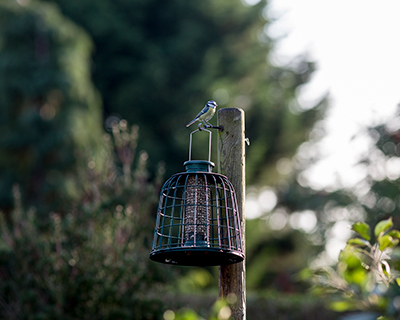Creating a garden for someone living with a terminal illness
How to adapt a garden for people living with a terminal illness, from Thames Hospice Volunteer and Horticultural Ambassador Graham Stone
Graham Stone has had an eminent career as one of Her Majesty Queen Elizabeth II’s royal gardeners, spending 40 years working at Windsor Castle. Since retiring from this prestigious role four years ago, he has been volunteering in the gardens at Thames Hospice in Maidenhead, Berkshire.
The hospice is set in 8 acres of beautiful gardens and a lakeside position right on the shores of Bray Lake in Maidenhead.
“The gardens at Thames Hospice offer patients and their families an outdoor space to take a break,” said Graham.
The National Garden Scheme have provided invaluable support to Hospice UK and the wider sector in recent years, and have donated more than £7 million in support of hospice care since 1996.
If you’re looking to adapt a garden for someone living with a terminal illness, Graham has shared some of his tips and experiences to help you support your loved one.
1) Create distractions through nature
“In my garden at home, something as simple as sitting in the sun and watching little solitary bees coming in, laying their eggs and then sealing them over gives me great pleasure,” said Graham.
“Our gardens at the Hospice provide a safe haven for those we are caring for and supporting at life’s most difficult time, which helps them to take their mind off their illness,” said Graham.
2) Attract birds to your garden
“My stepfather’s bed was downstairs at home, and he loved watching the wildlife, especially birds. I created a bird feeder in the garden using bamboo, and he used to watch them flying in and feeding. He was in a lot of pain and discomfort but that just took him away, it was invaluable,” said Graham.
3) Keep the garden simple
“The Hospice gardens have been designed to be fairly low maintenance, but there is always plenty to do for our garden volunteers,” said Graham.
4) Draw on the garden’s therapeutic benefits
Alongside his volunteer duties as Horticultural Ambassador for Thames Hospice, Graham dedicates a lot of time to helping with visits and tours at the Hospice for schools and other local groups. “We take the children on our nature trails and talk about how the garden benefits people we care for as well as our staff.”
“We provide the children with a gentle education around hospice care and try to impress upon them that it’s not a sad place to be,” said Graham.
5) Appeal to your senses
“Grasses provide some lovely movement and colour, and if you sit and watch for long enough, you can often see butterflies and solitary bees visiting to get their nectar. With most grasses, you just need to cut them back in the spring and this will ensure that you benefit from the movement all year round,” said Graham.
6) Invite your local community in
7) Assess the accessibility of the garden
8) Celebrate your loved one through plants
“I’ve also been given plants from the royal household – this year we’ve been gifted cyclamen and some beautiful poinsettias for our patients.”
9) Create a space to grieve
The moment when somebody passes away is an important one, so it’s important to ensure that there’s a private place for families to go. You don’t want them to feel anxious that someone might be watching them as they grieve.
Thames Hospice provides complex, specialist palliative and end-of-life care for people with life-limiting conditions, as well as vitial support for their families.
There are more resources on caring for someone with a terminal illness available from Hospice UK, Marie Curie, Sue Ryder and Macmillan Cancer Support.


